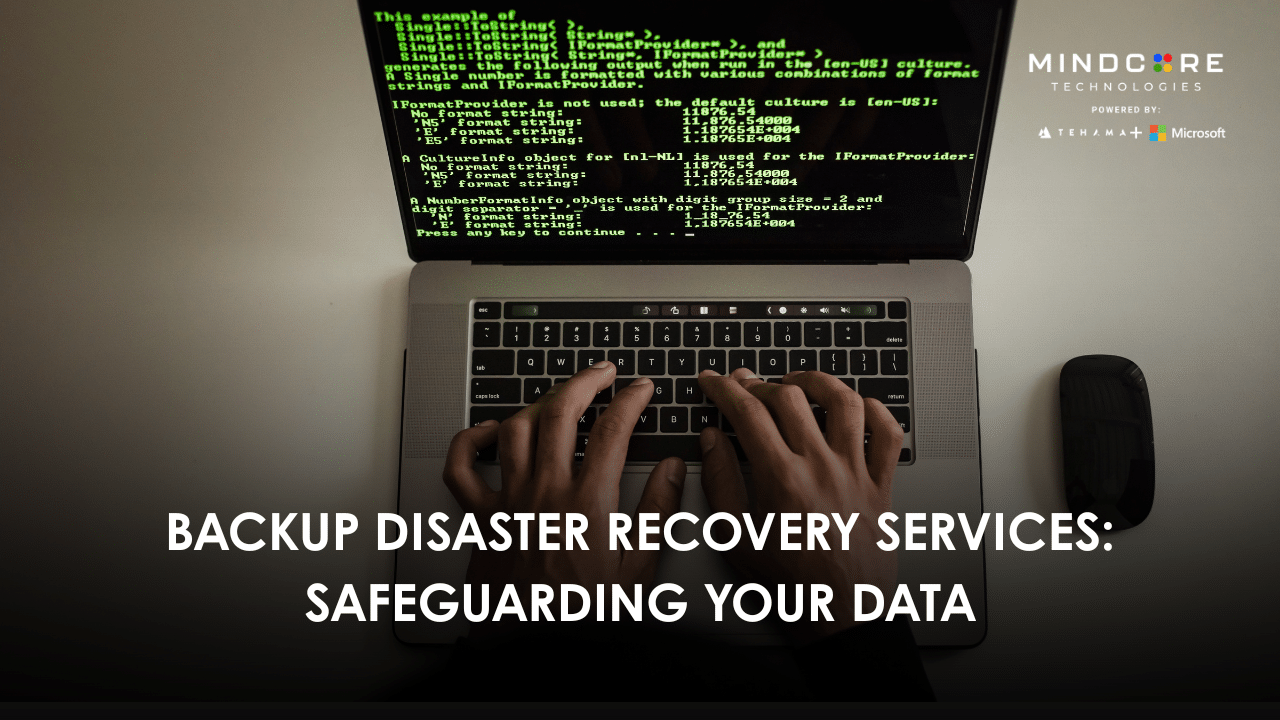It’s easy to think your business is safe just because you back up your files. But when systems crash, ransomware hits, or hardware fails, storing files isn’t enough. You need a way to get everything working again as soon as possible. That’s where backup disaster recovery services come in.
Unlike simple data backup tools, these services combine two things: automated backups and a full recovery plan. This gives your business a complete safety net, not just a file storage system.
What Are Backup Disaster Recovery Services?
Backup disaster recovery services (BDR services) are designed to protect both your data and your operations. Instead of just saving your files, they also include tools and processes to restore your systems quickly after an outage or attack.
In many cases, businesses confuse cloud storage or regular backups with true recovery. But BDR services go further. They manage backups automatically, store them securely, and give you clear steps to recover everything—from files to full systems. If you want the full picture, this idea builds on the approach used in data backup and disaster recovery services, where storage and restoration are handled as one strategy.
Core Features to Look For in a Backup Disaster Recovery Service
Not all BDR services are built the same. Here are the features that matter:
- Automated backup schedules: Avoid manual work and reduce human error.
- Fast restore tools: Quickly recover files, applications, or entire servers in minutes.
- Cloud-based access: Keep data safe offsite and ensure it’s accessible during local outages.
- RTO/RPO settings: Match your recovery time and data loss tolerance to your business needs.
- Testing and reporting tools: Regularly verify that your recovery plan works effectively before a real incident happens.
Some services even let you spin up temporary virtual machines so your team can keep working while your main systems are being restored. This adds another layer of protection during major outages. Many companies run disaster recovery testing regularly as part of their BDR service. It’s one of the best ways to spot problems early.
How These Services Help in Real-Life Scenarios
Let’s say your business gets hit by ransomware. If you’re only using a backup tool, you may have copies of your data, but restoring everything could take hours or even days. Worse, you may not know if the backups are clean or up to date.
With backup disaster recovery services, your data is already backed up in multiple places. Your provider can guide you through a full recovery, restore your systems from a clean version, and reduce downtime to a minimum.
Businesses that rely on cloud disaster recovery services also see major benefits when it comes to remote access. If your office is offline, your team can still work using cloud-based systems while local machines are being repaired.
Why BDR Services Are Better Than Backup Alone
Think of it like this: backup saves your data. Recovery gets your business running again.
Many companies have backups but no plan to use them when a disaster hits. That leads to longer downtime, more stress, and possible data loss.
The difference between BDR services and basic backups is simple. BDR includes:
- Real-time monitoring
- Recovery runbooks or steps
- Integrated tools for fast restoration
Signs You Should Consider a Backup Disaster Recovery Service
Some businesses may be fine with simple backups. But if any of these apply to you, it’s time to level up:
- You handle sensitive customer or financial data
- You use tools that must stay online at all times
- Your IT team is small or stretched thin
- You’ve had trouble restoring files in the past
Businesses using IT disaster recovery services often choose BDR providers to simplify their tech stack. Instead of juggling multiple tools, you get a single solution for storage and recovery.
How to Choose the Right BDR Provider
When looking for a BDR provider, start by checking what they actually do in a real disaster. A good provider won’t just give you backup tools—they’ll walk you through the full process of getting your business back online.
Look for these features:
- Support for both on-site and cloud recovery
- Clear recovery time guarantees in writing
- Simple dashboards for checking backup status
- 24/7 support from real people
If you’re comparing disaster recovery service providers, make sure the one you choose isn’t just selling storage space. You need a partner who knows how to help you recover.
What to Expect from a Modern BDR Setup
Today’s BDR tools are easier to use than ever. Many offer cloud dashboards where you can:
- Monitor backups in real time
- Run restore tests
- Set alerts for failed jobs
- Track compliance logs for audits
Let’s say a backup job fails overnight. A manager receives an automatic alert, logs into the dashboard, checks the logs, and restarts the backup within minutes, without needing to call IT. This kind of accessibility makes recovery faster and less stressful.
For businesses in regulated industries, many dashboards also support HIPAA, SOC 2, and ISO compliance by generating reports you can submit during audits. Some advanced services, like ATI disaster recovery services, also include custom onboarding and local support. That’s helpful if your business doesn’t have a big internal IT team.
Final Thoughts: Turn Backup Into Action
Backing up your data is smart. But knowing how to recover it quickly is smarter. With backup disaster recovery services, your business gets more than file protection. You get a plan. You get fast support. And you get the confidence that comes from being ready.
Ask yourself: if your systems went down today, would your team know exactly what to do? Would you be able to recover without losing hours or even days of productivity?
When you’re stuck waiting for someone to rebuild your environment manually, every second becomes expensive. But with the right BDR setup, you don’t wait around. You move forward without delays. The next time something breaks, crashes, or locks you out, you won’t panic. You’ll recover and keep moving.

